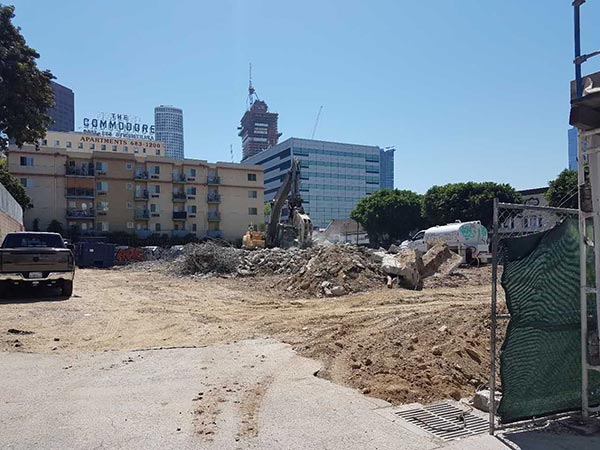A big-city heart beats again
By Lia Zhu ( China Daily ) Updated: 2017-07-01 08:36:43
 |
|
Downtown Los Angeles is undergoing a rejuvenation, and Chinese property developers are playing a major role. [Photo by Lia Zhu/China Daily] |
More than 700 new restaurants, bars, retail and night life venues opened from 2008 to 2014, according to the Downtown Center Business Improvement District.
Chinese investments start Greenland started the wave of Chinese investment with a $150-million acquisition of 2.6 hectares of land-a parking lot-in South Park in late 2013. Now that site is "Metropolis", a high-rise tower complex.
With investment exceeding $1 billion, the four-building complex includes an 18-story, 350-room hotel that opened on March 31, a 38-story residential tower with 308 condos that opened last month, and a 40-story tower with 514 condos and another 56-story tower with 685 condos under construction. The two buildings are slated to open in 2018 and 2019 respectively.
"I think Greenland USA's Metropolis is taking a leading role in the development in the downtown area," said Hu Gang, president and CEO of Greenland USA, a subsidiary of the Chinese real estate giant Greenland Group. "Now we are taking the leadership of the market, also, and we are creating the market as well."
Oceanwide Plaza, another high rise complex, and Shenzhen Hazens' proposed $700 million mixed-use project, along with the Metropolis, are reported to be the largest projects under construction in downtown Los Angeles.
Only several minutes' walk from the Metropolis is Oceanwide Plaza, another $1 billion mixed-use project by China Oceanwide, a privately owned investment company.
A 50-story Park Hyatt hotel with 184 rooms, and two 40-story towers with 504 condos is being built on the nearly 1.86 hectares. Upon completion in early 2019, the project will feature a 700-foot ribbon-shaped LED signage, which is expected to be the largest LED screen on the West Coast.
When Thomas Feng, CEO and president of Oceanwide Plaza, arrived in Los Angeles in 2013, it was not a "hot destination" in most people's eyes. "Not many people were aware of the renaissance at that time," he said.
The renaissance also was a result of the change in industrial and family structure, Feng said. "After manufacturing started fading in the 1990s, the lifestyle of big families living in a big house had changed, and the younger generation became the majority in the workforce, especially on the West and East coasts," he said.
According to a 2015 report by Beacon Economics for the Central City Association of Los Angeles and the Downtown Center Business Improvement District of Los Angeles, the demand for apartments in downtown Los Angeles tripled from 2000 to 2013.
|
|
|
|
|
|
|
|

























 Raymond Zhou:
Raymond Zhou: Pauline D Loh:
Pauline D Loh: Hot Pot
Hot Pot Eco China
Eco China China Dream
China Dream China Face
China Face






